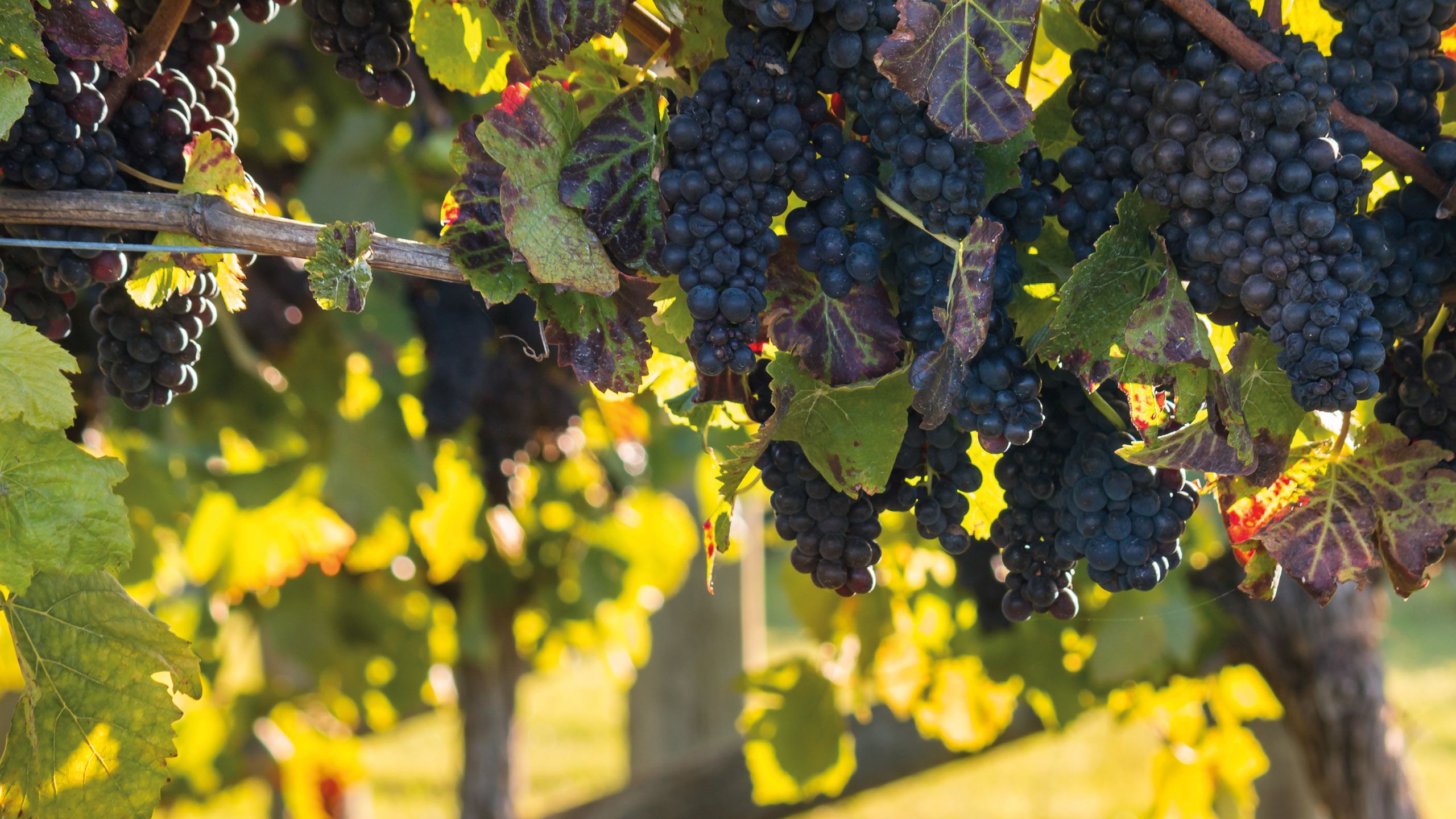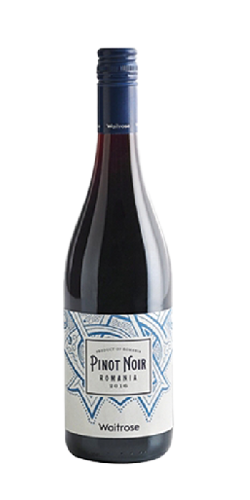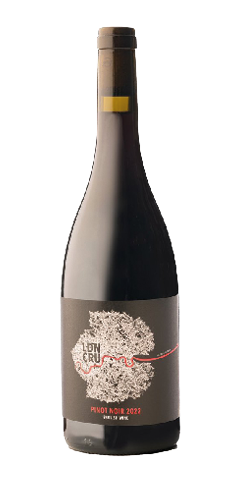Crowd pleaser
Refreshing and smooth with red fruit flavours, pinot noir is the grape to appeal to all

Carole A Boyle DipWSET Dental Editor, Surgeons’ News
Richard Lane DipWSET DipWSET wine educator, journalist and podcaster The Wine List
If anyone tells us they do not like red wine because it’s too heavy and they dislike tannins, we suggest they try pinot noir. This black grape produces light-coloured red wines with red fruit flavours of strawberries and raspberries. With age, the best-quality pinot noirs can develop more complex flavours such as leather, game and smoke. Often described as forest floor, these tertiary aromas might not sound attractive but, coupled with the variety’s primary fruit characteristics a good pinot noir can be delightful.
Furthermore, wines made from pinot noir grapes will have refreshing high acidity and low tannins, and are often light bodied: an excellent starting point to convert white wine lovers. Some would argue that pinot noir will appeal to all ages – not too high in alcohol, refreshing, smooth but also interesting. Waitrose is reporting an increase in sales of 6% over the last year, with heavier varieties such as shiraz falling out of favour with younger drinkers.
Pinot noir is also known as the heartbreak grape, as it is one of the most frustrating varieties to cultivate: fussy to grow and prone to fungal diseases in the vineyard because of its thin skin. However, it can make the most enjoyable, delicious wines to drink. Get it right and it is wonderful – but from the wrong site, which is too warm, it can be jammy and flat.
Pinot noir is produced across the world but Burgundy is its spiritual home where some of the most famous – and expensive – wines are produced. For example, Domaine de la Romanée Conti sells for thousands of pounds. The most prestigious vineyards are located in the Côte-d’Or, which is divided into two areas: the north Côte de Nuits and the south Côte de Beaune.
“Pinot noir will appeal to all ages – not too high in alcohol, refreshing, smooth but also interesting”
Unlike Bordeaux, with its emphasis on top chateaux producers, it is the vineyards that are categorised. Burgundy vineyards are divided into four ascending grades: Bourgogne, village, premier cru and grand cru. The classification relates to where the grapes are grown, with the best grapes grown mid-slope (the best location to capture the sun’s rays and to drain away rainfall). Vineyards in Burgundy often have many owners, with some only tending a few prized rows of vines. High demand for pinot noir not matched by supply makes finding bargain-priced red Burgundy near impossible. The characteristics of Burgundian pinot noir that winemakers across the globe aspire to include fresh red fruit aromas that develop mushroom, undergrowth and notes of game with age. But even Bourgogne-level wines are expensive, so we suggest looking further afield for better value.
Oregon to Otago
There are two regions of the world that owe their success to pinot noir: Central Otago in New Zealand and Oregon in the US. Both areas are relatively new to grape growing and have found in pinot noir the ideal grape for their soils and climate.
Central Otago is inland on the South Island, an area of mountains and valleys. Unlike the rest of New Zealand, the climate is more continental than maritime, with warm/hot summers and cold winters. Frost damage is a concern in winter and some growers use helicopters hovering over their vineyards to keep air moving. Maybe not very popular with the neighbours. This temperature difference gives good acidity levels but quality of sunlight is one of the most important factors. There is high UV intensity due to the hole in the ozone layer above Central Otago, which contributes to intense fruit ripeness and high sugars causing higher alcohol levels. Wines from this area tend to be full bodied and juicy in comparison to Burgundy. Quality has improved over the past decade, as have prices.
Oregon lies between California and Washington State, and has a moderate climate that’s ideal for pinot noir. Grape growing only took off in the 1960s and the industry is more rustic than nearby California, with small, boutique wineries. Interestingly, the French have taken an interest with Drouhin from Burgundy buying land in Dundee Hills some decades ago, the first time a Burgundy house made wine outside France. This area is known for its red soils, which are rich in iron and infertile, ideal for grape growing as vines need to work hard to put their efforts into grapes and produce less vegetative growth.
England to Eastern Europe
England is also growing more pinot noir, especially of value in sparkling wine, but single varietal; still pinot noir is increasing. Crouch Valley in Essex is becoming known for quality wines. It provides ideal growing conditions as one of the lowest rainfall regions of England and one of the sunniest. The variety often grown here is pinot noir précoce, whose early ripening is better suited to reducing the risk of cool autumns slowing ripening before harvest. There are only a few small wine estates and vintages sell out fast, but if you see Crouch Valley on a wine list, do give it a try.
If you are looking for a bargain pinot noir, try Eastern Europe, where low land prices and readily available labour mean lower costs with decent quality even if the wines lack true complexity. Chile can also be a good source of reasonable pinot noir – look for Casablanca or Leyda Valley on the label. South Africa produces good pinot noir from cooler areas such as Hemel-en-Aarde.
If you are a white wine drinker – or perhaps prefer heavier reds – do try a pinot noir: you might just find the experience changes your wine horizon.

Tasting notes
Give pinot noir a pop with these excellent wines
Waitrose Blueprint Romanian Pinot Noir
Available from Waitrose, £6.99

A bargain, entry-level pinot noir. Don’t expect complexity, but it does have ripe cherry and a little strawberry. Can be served lightly chilled and drunk on its own without food.
London Cru Pinot Noir 2022
Available from londoncru.co.uk, £25

This was Carole’s favourite at a tasting at this urban winery in West London. The winemaker doesn’t name his source, but is likely to include grapes from Essex, which are transported to the winery in SW6. Originally 100% single clone pinot noir précoce, it now has 20% of Burgundian clones. This gives the wine more complexity and produces a light, elegant red. The label shows the pinot noir leaf outlined
in a map of London.
Mt. Difficulty Bannockburn Pinot Noir
Available from Waitrose, £29.99

This is a Burgundian-style pinot noir with some complexity and is a great introduction to a Kiwi pinot noir. At tastings it could be confused with a much more expensive Burgundian wine.
Ataraxia Pinot Noir
Available from simplywinesdirect.uk, £24.99

From a beautiful vineyard in the Hemel-en-Aarde, winemaker Kevin Grant produces a limited range of quality wines. This pinot noir has red cherries, pomegranate, delicate forest floor and a hint of spice and new oak. Although ready to drink now, it does have potential for ageing.


